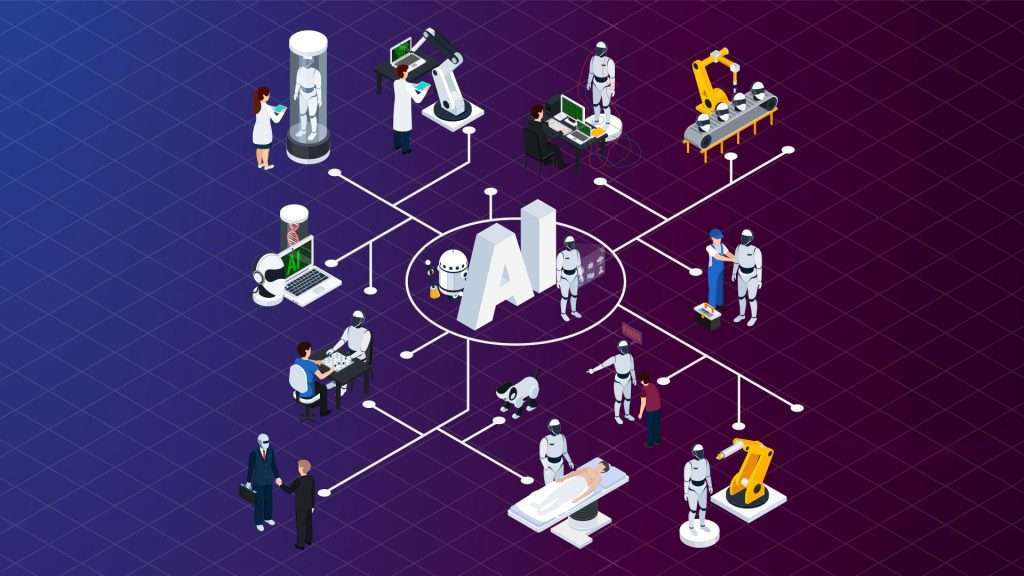Unleashing the Power of AI in Robotics: Transforming Industries and Enhancing Lives
In today’s rapidly evolving technological landscape, robots equipped with artificial intelligence (AI) are revolutionizing the way we approach problem-solving and innovation. These intelligent machines, ranging from Autonomous Mobile Robots (AMRs) to humanoid robots, are not only capable of performing complex tasks but are also adapting and learning from their environments. Let’s delve into the capabilities and benefits of AI-powered robots, exploring how they are reshaping industries and our daily lives.
The Evolution of AI-Powered Robots
Autonomous Mobile Robots (AMRs): Navigating Environments with Precision
As AMRs traverse their environments, AI empowers them to gather information through 3D cameras and sensors. These robots make informed decisions based on the data they collect, allowing them to deliver optimal outcomes. The applications of AI-empowered AMRs vary across industries, showcasing their versatility and adaptability.
Articulated Robots: Precision and Speed in Task Execution
Articulated robots leverage AI technologies to enhance their speed and accuracy in performing tasks. Vision sensors, such as 2D or 3D cameras, enable these robots to understand scenes, segment objects, and classify them. The result is faster and more precise task execution, showcasing the potential for efficiency gains in various sectors.
Human-Robot Interaction: Breaking Barriers with Natural Language Processing (NLP)
AI facilitates robots in understanding and responding to human speech and gestures without explicit training. NLP enables robots to answer questions, recognize speech, and determine sentiment. Conversational AI takes these interactions to a more human-like level, capturing dialogue, processing it, responding, and learning for future interactions.
Benefits of Integrating AI in Robotics
AI integration brings forth a multitude of benefits,
transforming the landscape of industries:
Increased Productivity and Efficiency
AI-powered robots enhance operational efficiency, enabling faster task execution and adaptive problem-solving. This results in a significant boost in overall productivity.
Improved Quality and Accuracy
The precision of AI algorithms ensures higher quality and accuracy in task execution. Robots equipped with AI technologies consistently deliver reliable and error-free outcomes.
Enhanced Worker Safety
As robots take on tasks with potential risks, AI contributes to creating safer working environments by enabling robots to make real-time decisions and adapt to changing conditions.
Critical Capabilities for Intelligent Robots
To truly make a robot intelligent, several critical capabilities are essential:
Robotics and Machine Learning: Continuous Learning for Adaptive Responses
Machine learning plays a pivotal role in enabling robots to learn and improve task execution over time. Real-time data and contextual information allow robots to develop new learning pathways, empowering them to solve novel problems encountered in their environments.
Natural Language Processing (NLP): Bridging the Communication Gap
NLP enables robots to understand human language, paving the way for seamless interactions. Tasks such as answering questions, speech recognition, and understanding sentiment become achievable through NLP.
Sensor Integration: Real-Time Analysis for Informed Decision-Making
AI-powered robots utilize a variety of sensors, including vision devices, vibration sensors, proximity sensors, and environmental sensors.

These sensors provide real-time data, enabling robots to analyze and act upon information promptly.
Real-World Applications: From Cleaning to Cooking
Skilled Cleaning Robots: Efficient and Autonomous
AI-powered cleaning robots exemplify the integration of AI in everyday tasks. These robots autonomously scan room sizes, identify obstacles, and remember efficient cleaning routes, requiring no human assistance.
Humanoid Robots: Social-Learning Marvels
Standing at 4 feet tall, humanoid robots equipped with AI excel in natural language communication and facial expression-based emotive interactions. These advanced robots find applications in education, research, and commercial cleaning.
Robotic Kitchen Assistants: Redefining Kitchen Automation
The second generation of AI-equipped robotic kitchen assistants is transforming the culinary landscape. These robots handle tasks such as frying, cooking, grilling, and coffee brewing, showcasing the potential of AI in kitchen automation.
Embracing the Future: Navigating a Connected World
The core principle driving the integration of AI and robotics is the belief that technology and humanity can coexist harmoniously. From optimizing operational efficiency to disrupting industries, AI has the power to transform our world. Whether we embrace these emerging technologies or not, their presence is undeniable, and they will play an increasingly crucial role in shaping our future with confidence and optimism. In a world where change is constant, AI and robotics offer a beacon of innovation, promising a healthier, connected, and creative future for all.
For further assistance, visit our channel and refer the video named
Revolution of AI in the field of Robotics or click the link.



Your article helped me a lot, is there any more related content? Thanks!